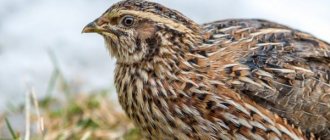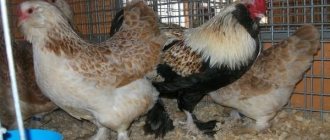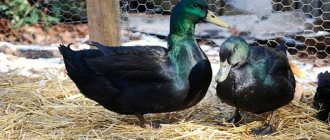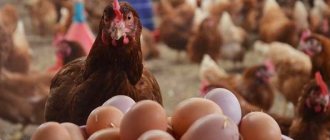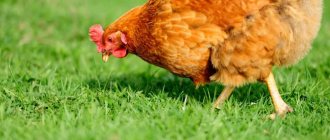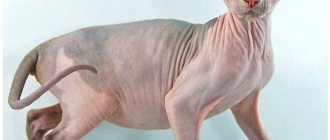- Wild animals
- >>
- Other animals
The tubifex is a slender, segmented worm that can be up to 20 cm long. The number of body segments can range from 34 to 120 and have on each side an upper and lower tuft of chitinous bristles (setae) that are used for burrowing. The worm may be red in color due to the presence of the respiratory pigment hemoglobin. This species is a hermaphrodite with a complex reproductive system.
Origin of the species and description
Photo: Pipemaker
The tubifex worm, also called the mud worm or sewer worm, is a type of worm-like, segmented worm that lives in lake and river sediments on several continents. The tubifex probably includes several species, but distinguishing them is difficult because the reproductive organs, commonly used to identify species, are reabsorbed after mating, and because the worm's external characteristics vary with salinity.
Fun Fact: Often referred to as sewage worms, tubifex worms are freshwater annelids that belong to the naididae family. Although they are scientifically described as Tubifex Tubifex, their common name comes from their frequent habitat in polluted waters.
Video: Pipemaker
These worms are relatively easy to culture, but it takes a month or more for the culture to reach a point where it can be harvested. Limnodrilus udekemianus is the species most commonly used in the aquarium hobby. Tubifex may cause an allergic reaction in some people. Therefore, you need to wash your hands after passing this food.
There are two types of tubifex that are farmed and sold as fish food:
- red tubifex (Tubifex tubifex), which has been used for this purpose for about 100 years. Because tubifex worms feed on anaerobic bacteria, they can cause intestinal disorders in fish (food poisoning, mainly) and septicemia (which means blood poisoning);
- black tubifex, which is a similar species but darker in color. Black tubifex is harder, more resistant to drying out and is less likely to cause disease in fish.
Advantages and disadvantages of feeding Tubifex
Feeding Tubifex has both positive and negative sides. Its meat contains amino acids, which are necessary for full growth and development, and fatty acids are poorly digestible and do not allow the fish to take on its brightest color. There are known cases of deformation of the body of the fry as a result of excessive feeding of the Tubifex.
It is not worth excluding it from the diet, as the juveniles gain weight well and develop well. It is recommended to combine it with other live foods.
Positive aspects include the fact that sexually mature adults, feeding on the worm, quickly prepare for spawning.
The calorie content of meat is quite high; with constant feeding, pets can develop obesity.
Appearance and features
Photo: What a tubifex looks like
Tubifex worms are segmented, bilaterally symmetrical, cylindrical worms with tapering ends. Typically, each body segment has four tufts of setae (chitinous bristles protruding from the body). The setae vary considerably in size and shape, and between families, and are therefore widely used in identification.
Accurate identification, as well as consideration of the internal anatomy, will likely require microscopic examination, and it is also worth paying attention to the rather complex reproductive organs. The number of gonads, the position of one gonad relative to another, and the body segments in which they occur are used to define families. In tubifex worms, the shape of the male duct is used to determine genus.
The features of the tubifex are as follows:
- a long, thin, segmented red worm;
- there are no points of view;
- testes in body segment X and male pore in segment XI;
- ovaries in body segment XI and spermatheca (sac-like invagination of the body wall to obtain sperm during copulation) in segment X;
- dorsal setae hairs and pectinate setae originate from body segment II;
- hairy setae (fine and tapering) and pectinate setae (double-pointed with a series of small intermediate teeth between the two points) are present in the dorsal setae tufts;
- bilateral (two-pointed) setae present in the ventral setal tufts;
- hair may be jagged;
- mature specimens lack genital setae;
- the peduncles of the penis are short, tubular, thin and wrinkled.
What kind of creature is this?
When describing the tubifex, it is important to focus on the following:
- thread-like body;
- size from one to ten cm;
- may be pink or slightly brown in color (due to the presence of hemoglobin in the bloodstream);
- on the surface there are special formations - bristles (four along each segment);
- the head end is surrounded by an accumulation of mucus, and at the tail end there are gills. That is why, when there is a lack of oxygen, the back part performs rotational movements;
- capable of sexual reproduction.
In natural conditions, they like to live in stagnant water, for example, a silted pond. Tropic to organically polluted water. It grows quickly and reproduces intensively. This “uncleanliness” ensures its advantages as a source of some essential food components: proteins and lipids.
Aquarium inhabitants eat it with pleasure, while receiving the entire necessary diet of biologically active components. In addition, these are calories, which, in turn, provide strength for activity, vigor and growth.
Where does the tubifex live?
Photo: Tubifex in water
The tubifex is closely related to earthworms, but is primarily found in aquatic or at least semi-humid habitats. Due to the habitat in which it is found, the tubifex is a carrier of many infectious diseases. The tubifex lives naturally in running water, especially wastewater and open drains with high levels of organic matter.
Fun Fact: Pipe worms live in a variety of aquatic habitats, including sewer systems. They are usually associated with quiet waters containing a lot of silt and decaying organic matter. Many can tolerate low levels of dissolved oxygen and high levels of organic pollutants.
Therefore, they may be a sign of poor water quality. When stream ecologists find them in their collections, it is a sign that something may be out of balance in the stream system. When tubifex worms are numerous, they can cover large areas of sediment, giving the mud a reddish tint. Sometimes they cling to underwater plants and other objects. When oxygen is particularly low, they can come to the surface.
The tubifex lives in cohesive mud in a variety of habitats and is tolerant of oxygen deficiency. It is particularly common in contaminated sediments and marginal habitats not occupied by many other species, such as upper estuaries where intermediate salinity is less than 5%.
Now you know where the tubifex is found. Let's see what this worm eats.
Method of catching the common tubifex
The fishing method is selected based on the required amount of live food:
- Using a net and bait. Lower a net to the bottom of the reservoir, in which spoiled fruits, pumpkin pulp, and carrot peelings are placed.
- A shovel or scoop will allow you to catch a large number of tubifex at once.
| Stage | Description |
| Catching the species | Scoop up the top layer of soil along with the worms. |
| Filtration and settling of the mixture | Let the mixture sit for several hours and drain off the settled water. Spread a layer of sludge on cheesecloth. |
| Heating | Take a cloth with sludge and place it over the container from which the steam is emanating (pan, bucket, bowl). The tubule maker is activated by temperature exposure. |
| Collection of individuals | Place the resulting ball on a frame (wooden, made of wire with stretched fabric) and sprinkle with water. Worms live only in moist environments. |
What does the tubifex eat?
Photo: Tubifex worm
Aquatic tubifex worms are associated with detritus, dirt, still water and lower oxygen levels - generally speaking, poor water quality. However, like their earthworm cousins, they recycle nutrients, scrape decaying algal mats down to substrate, and play an incredibly important role in the food chain. Like earthworms (which eat dirt), tubifex worms are worms that feed on whatever material they grow in.
Most commercially farmed tubifex fish are raised in trout pond effluent, which means they live on fish manure. Needless to say, this makes them potential hotspots for the transmission of bacterial or parasitic infections. But freshwater fish love tubifex and thrive on them if they are managed properly.
The tubifex can even live in heavily polluted waters. It buries its head in the dirt to eat, allowing its tail to sway while it does so. Like the land worm, the aquatic tubifex worm feeds primarily on dead plants. If there's a particularly juicy dead animal nearby, he'll munch on that too, so long as he doesn't have to travel too far.
Breeding tubifex at home
Breeding requires certain skills from the aquarist. Prepare a special soil: mix garden soil with dry moss, add a decoction of rice and wheat. Place the finished substrate in a warm place for at least two days. Nutrient bacteria must develop in it.
After this, place the tubifex worms in the soil and irrigate regularly with clean water. Change it at least once a week. So, 15-20 cm3 of earth is enough for a month, after which the composition needs to be updated.
Features of character and lifestyle
Photo: Tubifex at home
Pipe worms and their relatives typically hide their heads in small tubes in the sediment while the rest of their bodies rise up, waving the water around. Gas exchange (respiration) occurs directly through the skin, while the oral cavity is nourished by the decomposition of organic matter from the substrate. Their waste is released into the water, and thus the tubifex worms “turn over” the sediment in the same way as earthworms.
Tubifex worms are able to thrive in oxygen-poor environments, such as sewage treatment ponds, because they have a much more efficient way of assimilating dissolved oxygen than most other organisms. The worms, typically 1 to 8.5 centimeters long, are found in mud tubes that they create from a mixture of mud and mucus. However, they often leave their posterior segments outside the tubes, waving them around and creating a current that allows them to collect any surrounding traces of dissolved oxygen.
Like other worms, tubifex worms have relatively high hemoglobin levels and a characteristic bright red color. They are familiar to many aquarium hobbyists who often purchase them as high protein food for their pet fish. Tubifex plants are sold frozen, dried or live, although this practice is becoming increasingly rare. Live tubifex worms are not as widely available commercially as they once were due to concerns that they may contain human pathogens they acquired in contaminated waters.
How to store worms
Timely washing can keep the tubifex alive for up to two months. To preserve all the beneficial properties, store it in a thin layer of water. It is best to take a piece of cloth, wet it, and lay the worms on top. Place live food in a shallow container. An acceptable temperature is 5-10 degrees, which can be achieved using a refrigerator.
When washing, remove dead worms: worms that feel well instantly curl into rings and tend to form lumps. Such worms are suitable for consumption.
Freezing live food will make storage much easier. The tubifex in this form still retains its beneficial properties for six months.
Before freezing worms, remove dead worms, debris, and possible waste products. Spread them in a thin layer or in a form convenient for you.
Social structure and reproduction
Photo: Common tubifex
Tubifex worms are not able to regenerate lost body parts and do not split into two or more parts to form two or more individuals. They are not asexual; these creatures reproduce sexually. The genital organs are located near the ventral part of the body.
Interesting fact: Tubifex worms are hermaphroditic: each individual produces both a sperm and an egg, and during mating, a pair of individuals fertilize each other's eggs.
Mature tubifex worms have a clitellum, a ring-shaped or saddle-shaped stripe towards the front of the body (earthworms have the same structure). The clitellum surrounds about 2 or 3 body segments, including the segments that produce eggs and sperm, and secretes a mucous cocoon that protects the fertilized eggs until they hatch. Tubifex worms do not have a separate larval stage; the young are simply small and immature. As they grow, their length increases by forming new segments just before the very last section.
After copulation, which involves the transfer of sperm between two individuals, the sperm is stored in sacs located behind the female reproductive opening. These fertilized eggs are then arranged like a cocoon. The eggs in the cocoon develop within a few days of being laid, and the worm's development is complete and it becomes a fully functioning worm.
Feeding
It is generally believed that tubifex should be fed using a feeder. The worms do not quickly fall to the bottom and do not burrow into the ground. But my fish easily dealt with the worms sticking out of the ground, not allowing them to get too hot in the aquarium. And some fun for the fish. If the aquarium inhabitants are not overfed, then the tubifex will not accumulate in the ground and spoil the water. The fry can be fed finely chopped worms using scissors or a razor blade. You can also freeze it.
Natural enemies of tubifex worms
Photo: What a tubifex looks like
Tubifex worms are an important food source for young and small fish and many other small aquatic predators. Aquarists know that tubifex worms are a popular fish food. Worms are available in freeze-dried form. Sometimes they turn into small cubic bales - pet food. Meanwhile, when an aquarist discovers live tubifex worms in an aquarium - usually found in a detritus-covered gravel layer - this is a sign that the aquarium needs cleaning. These oligochaete worms, which are often collected from sewage-contaminated mud, are a popular food source for some tropical fish.
Tubifex is usually available as live, frozen or freeze-dried products. This is most economically important for humans as the host of the parasite Myxobolus cerebralis, which causes disease in fish stocks. No other worms are known to harbor this parasite. Therefore, care should be taken when feeding live tubifex to aquarium fish.
Commercially processed tubifex should be safe. But you should be careful with low-value or old stock pipe makers. This food was extremely popular in the past, but since the discovery of this parasite in live worms, aquarists have been wary of using it, and live worms are now generally not sold in stores.
Tubifex is a small food with a high protein content, making it very suitable for small fish and fry. But you should be careful about feeding them tubifex worms constantly, because no single food can satisfy all of the animal's nutritional needs. The use of tubifex as live food for juvenile fish has long been practiced in farmers' fields and is an important spawning food.
Ways to protect your fish from possible diseases
Always pay attention to the appearance of the worms. They should be:
- rich color;
- no repulsive odor;
- mobile.
Disinfecting complementary foods will help avoid many diseases. To do this, before feeding, dip the worms in a weak solution of potassium permanganate, soak them in water for several hours and rinse them under running water several times.
Frozen tubifex poses an increased danger; it is better to treat it with antibiotics. You can purchase them at any pet store or veterinary pharmacy. Experienced aquarists advise soaking tubifex in preparations with bifidobacteria. Also, this kind of microorganisms are found in fermented milk products. This complementary food will be beneficial for the fish’s intestines.
You can use a rinse for disinfection in the form of a 5% solution of table salt.
Although the tubifex is unpretentious, it does not like chlorinated water (it may die); you need to use distilled or settled water.
How to choose the right pipe maker when purchasing
The tubifex is sold at a poultry market or in a pet store. When choosing food, you need to pay attention to the color and condition of the worms:
- Fresh, healthy tubifex is bright red or brown in color, elastic, mobile, and clumps into a ball.
- If the portion is dark, with white streaks of dead worms, and the worms themselves are loose and motionless, then such a tubifex has almost spoiled and will not be stored in the refrigerator for a long time.
